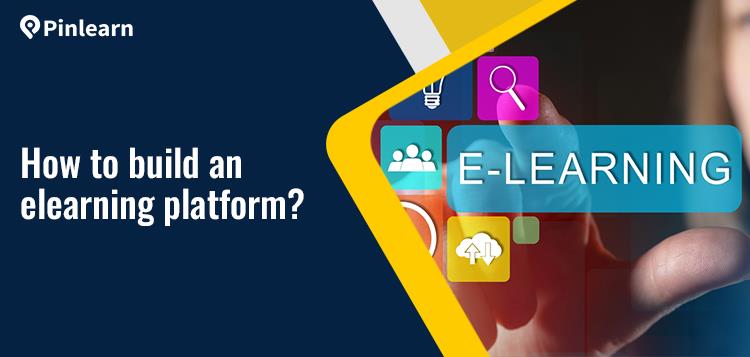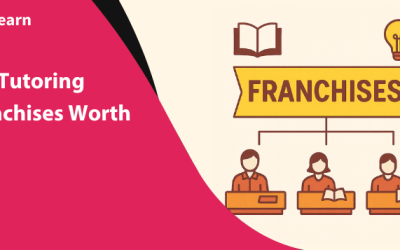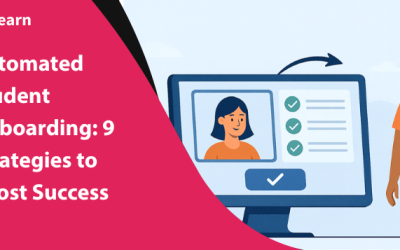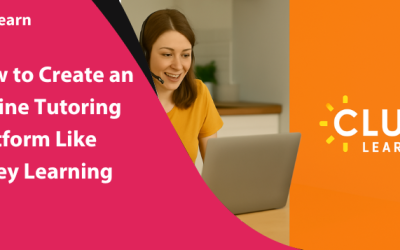How to Build an E-learning Platform?
E-learning platforms bridge learners with teachers and are valuable tools for making an impact. While they make learning more enjoyable for learners; for tutors the streamlined teaching is a given!
So, if you’re wondering how to build an e-learning platform and make a difference, this is the right moment to step in! However, you should put in some thought to choose the right platform. After all, what matters is a well-rounded learning experience! This blog dispels the strategies and steps to make your entrepreneurial leap smooth and revolutionary!
Let’s understand what it takes to build an e-learning platform!
E-learning Market Overview: Market Size, Growth Drivers, Trends
The global e-learning market is expected to reach $933.5 billion by 2032, up from $263.5 billion in 2023. The industry witnessed a 14.8% growth from 2024 to 2032.
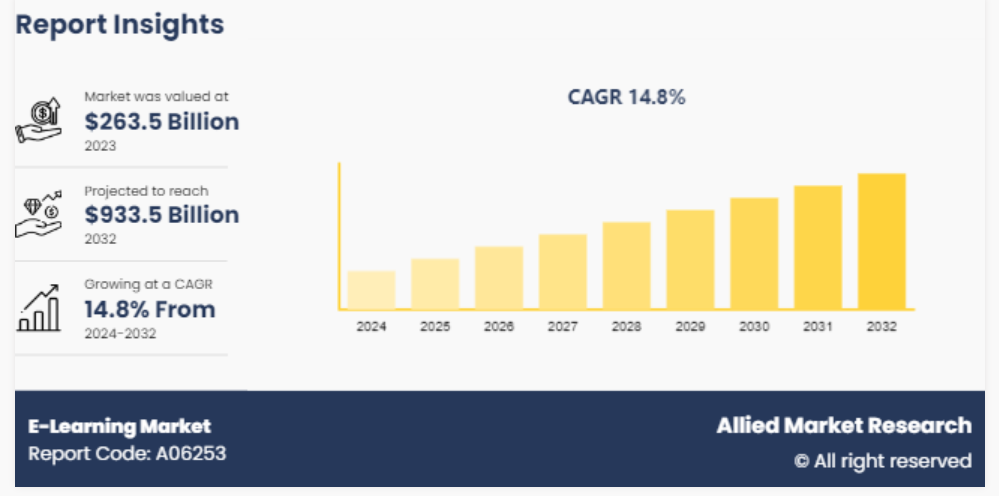
The widespread adoption of the internet, personalized learning, increased flexibility, and the need for strong workforce skills are the growth drivers. And K-12, higher education, and test preparation are the major categories.
Micro-learning, gamification, mobile-learning, and adaptive learning are the current e-learning trends. In the future, AI and machine learning are expected to propel e-learning growth further.
Key players region-wise are North America, Europe, Asia Pacific, Latin America, and Middle Eastern countries.
Why Build an E-learning Platform?
Now, you might be convinced that the e-learning industry holds immense potential!
Let’s take a look at the benefits of building an elearning platform! From the market demand to global reach, there are a lot of reasons for building your e-learning platform!
Growing Market Demand
The global elearning market size is expected to reach $933.5 billion by 2032. The shifting educational needs, technological advancements, remote learning, are the key growth drivers for growth in the e-learning industry.
Diverse Revenue Streams
Starting an e-learning platform is a profitable pursuit. Live tutoring classes, pre-recorded courses, subscriptions, corporate training programs, and affiliate marketing are the ways to monetize your learning platform.
Global Reach
You can reach out to learners worldwide regardless of geographical boundaries. This opens new opportunities for collaboration and learning.
Accessibility
Unlike the traditional model, e-learning platforms offer flexibility to learn at your convenience. This suits learners with varying learning speeds.
Minimal Startup Cost
Imagine the costs of running a traditional learning platform. You can reduce the tutoring business costs of infrastructure, overhead operations, and learning materials with an online platform.
Blended Learning
Your e-learning website can supplement physical classrooms. This provides ongoing access to students with videos, learning tools, and courses to enhance learning.
What are the Essential Features to Build an E-learning Platform?
The right features make a successful e-learning platform!
Before moving on to the detailed guide on how to build an e-learning platform, let’s do some research. Consider the following key features for building your e-learning platform:
-
Course Management Software
Your e-learning platform must allow tutors to create, manage, and sell online courses. A comprehensive dashboard helps create free and paid courses across different course categories and target audience. Tutors can create media-rich courses and achieve different learning outcomes.
-
Live Class Management
If you wish to offer live tutoring sessions, integrate your elearning site with popular video SDKs like Zoom and LessonSpace. Real-time interactivity involves scheduling sessions, whiteboard tools, and screen sharing.
-
Multiple Monetization Channels
Include diverse revenue streams like commissions, subscriptions, ads, and certifications in your e-learning site. Set a standard or tutor-specific commission rate for all platform transactions.
-
Tutor Dashboard & Analytics
A single dashboard helps to create courses, schedule one-to-one and group sessions, view upcoming appointments, check earnings reports, etc.
-
Comprehensive Admin Dashboard
A sophisticated admin dashboard reveals insightful data on business metrics and growth. You can generate detailed reports on tutor, student, payments, courses, etc. Besides, admin can easily manage appointments, payouts, commissions, and basic platform settings.
-
Communication Tools
Enhance tutor-student communication with chats, discussion-boards, emails, and platform notifications. You could even go ahead and include reminders on course launches and renewals.
-
Payment Integration
Stripe and PayPal are trusted payment gateways for online learning platforms. Ensure your payment gateway supports major payment methods, chargeback support, and quick turnaround time.
-
Security and Compliance
Include strong data encryption, multi-factor authentication and strong password policies. Offer appropriate access controls and access roles to users.
⚡Related Reads: Essential Features for an Tutoring Platform
How to Build an E-learning Platform?
Now, let’s dive into the essential steps to build an elearning platform!
Step 1: Decide Your E-learning Platform Type & Niche
“Building an e-learning platform” is a broad goal. In an age when the demand for e-learning platforms is surging, there’s a platform for everything. From learning a new skill, enhancing customer education, reducing onboarding time, online learning caters to different business needs.
To get started, here are different types of e-learning platforms:
-
E-learning Course Marketplaces (Learning Destination Site )
These are bustling learning hubs for learners. Think of Udemy, Coursera, and Skillshare. They are much like a virtual store like Amazons, where learners can ace any skill or interest online. Creators can design & upload courses using the course authoring tool or a LMS.
Niches: Niche-specific, skill-specific, industry-specific platforms
Examples: Udemy, Coursera, Skillshare, EdX, Udacity (tech and coding-specific)
-
Tutoring Marketplaces
Want to offer personalized tutoring? Start an online tutoring marketplace catered to unique learning needs. Learners can take tutoring sessions for a specific subject or topic. Appointment scheduling and real-time interactivity are the main platform features.
Niches: K-12 learning, Subject-specific tutoring, language tutoring
Examples: Wyzant, Varsity Tutors, Tutor.com, Chegg, Preply, Skooli
-
Language Learning Apps
Language has no borders! And the language learning industry is in for an upward growth. These platforms often integrate AI, personalized learning paths, vocabulary and grammar training, and progress tracking.
Niches: Gamified language learning app for kids, AI-powered language learning, Corporate language learning app
Examples: Duolingo, Babbel, Memrise, Rosetta Stone
⚡Related Reads
-
Learning Management System (LMS)
LMS is an e-learning platform that creates and organizes educational material and tracks progress. It is especially useful for managing learning programs for employees, students, customers, or large audiences. Saas/cloud-based, on-premise, and open-source LMS are the three types of LMS.
Niches: Customer training, employee training, distance learning, Educational training
Examples: Moodle(open-source LMS), Docebo, Talent LMS, Absorb LMS are the top LMS platforms.
-
Social Learning Platforms
Social Learning Platforms are peer-to-peer collaboration spaces for interactions, community-building, and knowledge sharing. These platforms include features like discussion boards, Q&As, and leaderboards and step beyond one-way learning.
Niches: Professional development, skill building, academic education
Examples: 360 Learning, Miro, NovoEd, Disco, Maven Learning
Step 2: Choose Your Monetization Strategy
Next, you need to find ways to monetize your e-learning platform. There are several e-learning platforms competing in the e-learning industry. So, you need more than quality content to stand out!
Choose the right monetization streams catering to your niche and target audience. Pick the ones that maximize your revenue potential.
Here are a different monetization strategies & business models to pump in revenue:
-
The Classic Pay-per-course Model
This model is straightforward and direct – pay once, learn forever. Here instructors create a course, set prices and sell it on the platform. Learners purchase the course and get life-time access. This is perfect for cohort-based courses and ones that don’t require frequent updates.
Udemy, Coursera, and EdX are examples of pay-per-course models.
Pro Tip: Maximize your course sales with upselling and cross-selling related courses.
-
Recurring Subscription Model
Here learners can access a wide range of courses and resources for a fixed fee. This model works for niches where learners need access to a pool of courses. Personal development and technology are befitting niches for the subscription model.
Coursera and Skillshare are examples of e-learning platforms with a subscription model.
-
Freemium Model
Do you believe educational resources should be accessible to all? Then, the freemium model might just be your call! While the basic features of the platform are free, you need to pay to access the premium version. Ads and donations are two variations of the freemium model.
While there are only a few companies in this clan, the ultimate goal is to create a great user base.
Khan Academy and Duolingo are examples of the freemium business model.
-
Monetizing on Certificates
Certificates not-only build credibility but are a great way to monetize your platform. Platforms typically offer the course access free but charge for certificates.
Coursera and Alison offer free course access but charge for certificates.
-
Corporate Partnerships
Upskilling or re-skilling is a popular trend in corporate culture. Partnerships with e-learning platforms often help companies and government organizations to groom their talent force.
Udemy for Business, LinkedIn Learning, and Coursera for Business are powerful platforms for corporate partnerships.
Step 3: Find a Solution to Build Your E-learning Platform
The platform you choose to build your e-learning platform can make or break your business! From onboarding educators, creating their first course, and delivering an impactful learning course — you’re defining a dynamic experience!
Whether you’re creating an employee training LMS or course marketplace, choose the right e-learning solution to scale your business!
Below are the different ways to create an e-learning platform:
- Website builders like Wix, Hostinger and Squarespace
- CMS + Plugins (WordPress with LMS plugins like LearnPress, TutorLMS, LearnDash)
- LMS like Moodle, Canvas, TalentLMS, Blackboard Learn
- Readymade clone scripts
- Custom Development
Look for a complete package — design, marketing, money-making possibilities and community-based tools!
Consider asking these questions:
- What payment gateways does it support?
- What are the different monetization streams on the platform?
- Does the platform allow the creation of bundles and subscriptions?
- Does it allow you to host live tutoring sessions and self-paced courses?
- Is learning secure on the platform?
Check the e-learning software’s testimonials and reviews for some social proof:
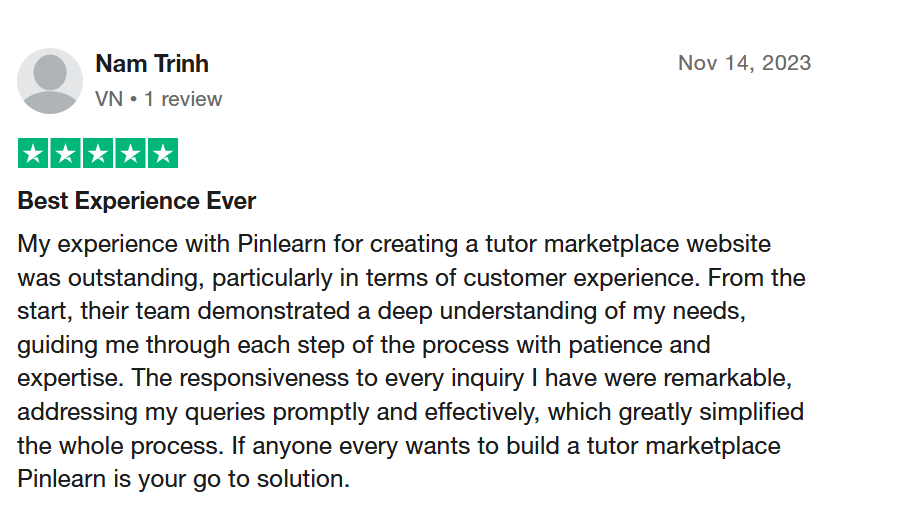
Step 4: Set up Your E-learning Website
Now, let’s move on to the crux of this: how to build an e-learning platform guide! The elements required for your e-learning website depends on the platform you choose!
-
Domain Name & Hosting
Before you begin with building your e-learning website, you need to choose a relevant domain for your website.
Your domain defines your identity on the web. Hence, choose a name that’s easily relatable and memorable.
Domains like .org indicate credibility and trustworthiness and are used by non-profits. You can create a subdomain like academy, school, university, course, or education and connect it to your existing website. Check if your preferred domain is available; if not, choose an existing domain.
Next, choose a reliable hosting provider to host your e-learning site. Consider factors like storage, scalability, uptime, customer support, security and budget. Hostinger, HostGator, AWS, and LiquidWeb are popular hosting providers for your e-learning site. Decide whether shared or managed hosting(VPS) works best for you!
-
Design & Customization
When designing your elearning site, think about the platform experience. Your website should balance aesthetics, user-friendliness, and offer stress-free learning. How do you provide the best experience?
Everything begins with researching your audience. Learn more about their preferences, backgrounds, goals and interests, to put forth a great experience! Then, find the crucial user interactions in your e-learning site. For example, an extensive search tool and appropriate filters for course search & discovery.
Choose a personalized template that provides a unique brand for your e-learning website. Finalize the colors, typography, fonts, layout, and buttons that fit your business goals.
Decide on the essential pages for your e-learning website.
-
Create & Upload Content
You have created the basic foundation for your e-learning site! It’s time you create & upload content and get your site up and running.
So, stay true to your word and create content that’s tailored to the learning environment and engaging enough!
Popular content types include:
- Slides or PowerPoint presentations with multimedia
- Pre-recorded course videos for self-paced learning
- Microlearning content like PDFs, infographics, podcasts, audio clips, etc.
- Interactive content like quizzes, assessments, or surveys
- Gamified modules with leaderboards, badges, points, etc.
Create organized lessons, modules and categories for a better learning experience! If you’re building a course or tutoring marketplace, you need to onboard the right educators!
-
Set-Up Payment Gateways
Aiming for a well-rounded platform experience? It doesn’t stop with a great learning experience; integrating the right payment gateway is crucial! Look for a reliable payment gateway that facilitates convenient and secure payments.
Consider factors, such as payment methods, turnaround times, and chargeback support. Stripe, PayPal, RazorPay, etc are some of the popular payment gateways.
If you’re planning to embrace a subscription model, choose a payment gateway like Stripe that supports subscription plans. You can even integrate a local payment gateway like PayFast (South Africa), PayStack (Africa), Giropay(German), Magopay(Europe).
-
Add Interactive Features
Whether you’re designing a gamified course or want to enliven boring sales training, some digital storytelling could make a world of difference!
For example, you can add interactive quizzes at the end of every lesson. This is a great way to memorize and check knowledge retention. You can even add some digital storytelling to create a video capturing a typical employee’s day at work. This goes on to make a great onboarding experience!
Step 5: Launch Your Website
After you complete building your e-learning platform, it’s time to launch your e-learning site.
Here’s a checklist for a successful platform launch:
- Test all the platform features and functionalities and fix the bugs and errors
- Check for mobile-responsiveness and accessibility across all browsers
- Ensure all the website content is uploaded and organized into modules
- Re-check all the CTAs across the website, landing pages, etc.
- Ensure the payment gateways are configured, and transactions work properly
- Make sure the backup system and firewalls are functional
Create some excitement and hype by running promotional campaigns on social media. This could be early-bird discounts, sneak-peek or exclusive content. You could announce the launch through email, press release or social media.
Once you launch your website, use analytics to track the performance, traffic, user engagement, etc. Google Analytics is a great tool to analyze these metrics and gain insights on user preferences, popular courses, and improvement areas.
Well, that was our detailed guide on how to build an e-learning platform! Let’s look into the marketing tactics so your e-learning platform grabs the spotlight!
How to Promote Your E-learning Site?
With the emergence of new players in the ever-evolving industry, just developing your elearning website isn’t enough! You need to bring your platform to the limelight with some outright marketing!
Struggling to find the right marketing hack? We’ve got some powerful marketing tactics to attract the right audience, including:
Social Media Strategy
To start with, choose the right social media platform. Consider Instagram, Facebook, TikTok, and X(Twitter). Engage your audience with compelling success stories and share educational resources or tips.
Take cues from Duolingo’s viral TikTok marketing. The language learning platform’s feeds are full of hilarious duo (platform’s mascot) memes and well-played storylines!
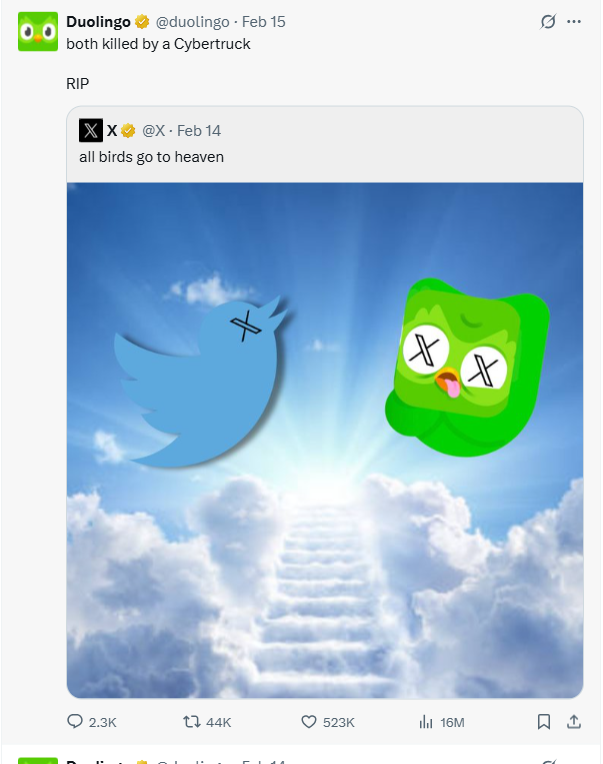
Email Marketing
With email marketing, you can easily convert your prospects into students or retain existing learners. First segment your email list into existing learners and prospective students. You can send engaging newsletters about industry insights and trends, course updates, promotional offers!
Udemy has a fantastic email marketing strategy! From seasonal offers, course recommendations, course updates, & trends, the online learning platform has mastered the art of email marketing.
Partnerships & Collaborations
You can partner with educators, influencers, or bloggers in the e-learning industry. Speaking about collaborations, why not collaborate with educational institutions to offer supplementary degrees and certifications?
Coursera for campus is exemplary in e-learning collaborations. It collaborates with 350+ leading industry partners and universities to offer degrees and professional certifications.
Optimize for Search Engines
The simplest way to find an online course or tutoring session is a quick Google search! So, make sure your e-learning site finds a place in the SERPs! Figure out the right keywords for your website and landing page. Find relevant backlinks through guest posts to build trust.
Online Advertising
Effective advertising hinges on the right audience! YouTube Ads, Google Ads, LinkedIn Ads, and Facebook Ads are strategic places to drive traffic.
For example,
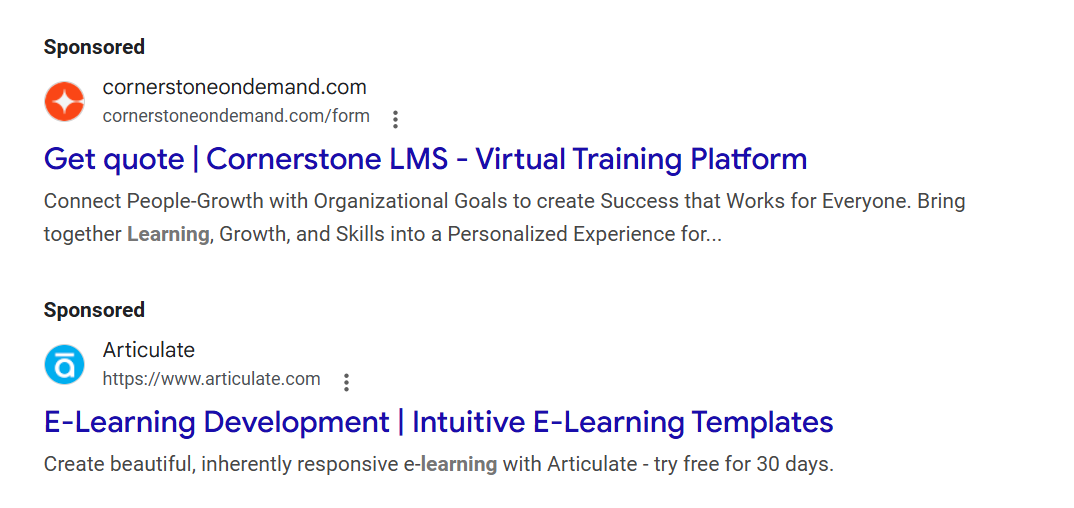
Leverage Testimonials & Case Studies
92% of people read online testimonials before making a purchase. Share success stories or case studies to highlight the benefits of your e-learning website. You could include them on the website or course landing pages, email marketing, or video testimonials.
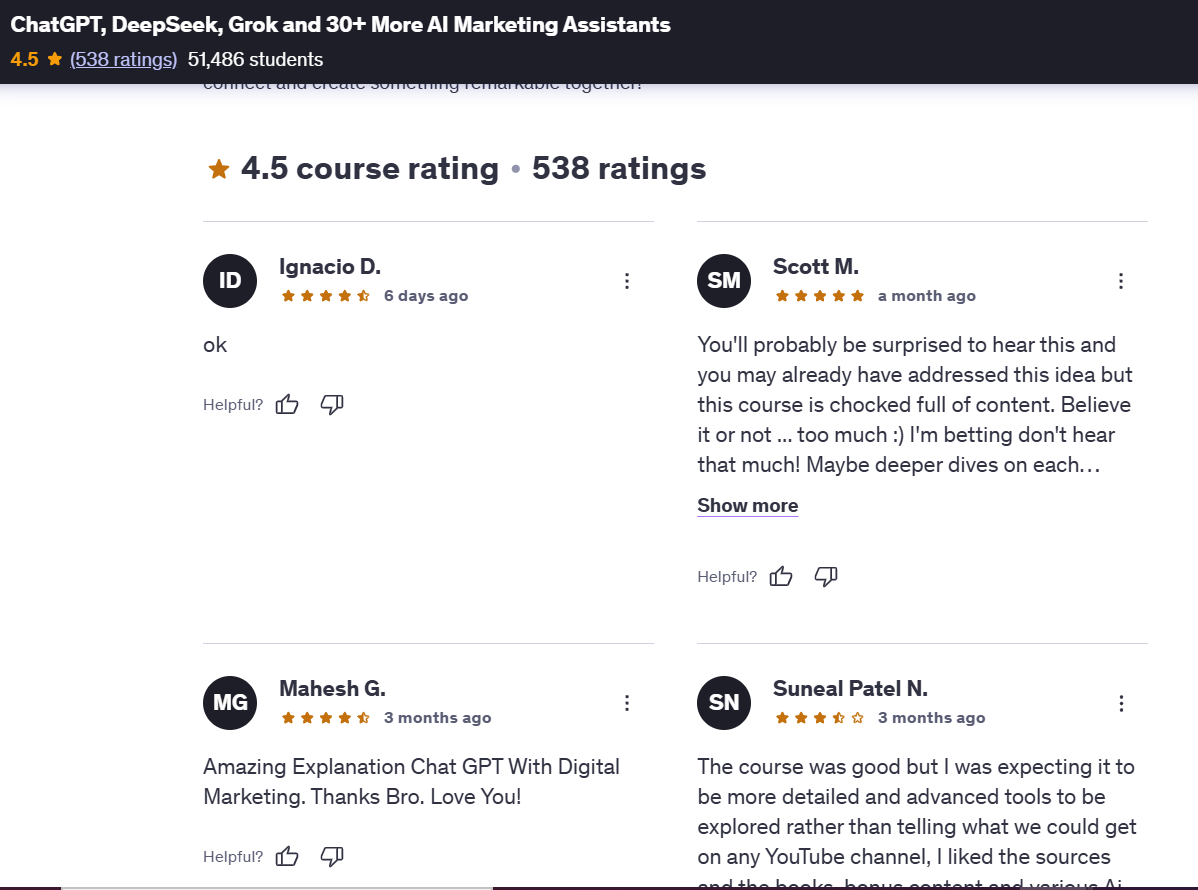
Final Thoughts
Building an e-learning website requires some research work. From identifying a profitable niche to promoting your e-learning site, every step requires thought and execution. With the booming e-learning industry, it never had been such a right time to enter!
By implementing our detailed guide on how to build an e-learning platform, you’ll certainly be able to build a successful e-learning website. To make an exceptional impact in the world of learning, offer valuable content and monetize through profitable revenue streams.
Whether it’s a smooth transition from the traditional to the digital realm or software for your educational institute, Pinlearn fits every business need! You can build a perfect educational platform by blending our proven expertise with cutting-edge technology.
Contact our team and start building your e-learning site today!
FAQ-Related to How to Build an E-learning Platform
1. How to create an e-learning website?
Follow these steps to build an e-learning website:
- Define your target market
- Choose your domain & hosting
- Choose your business model
- Determine your revenue streams
- Choose the right development approach
- Create & Upload Content
- Launch your e-learning website
- Market your e-learning website
- Scale your e-learning website
2. How much does it cost to build an e-learning platform?
The development cost of an e-learning website ranges from 50,000 to 100,000, depending on the features. Features, complexity, tech stack, and developer rates are the factors affecting the overall development cost of your e-learning platform.
3. Is it profitable to build an e-learning platform?
Yes, it is profitable to build an e-learning platform. You could earn from live tutoring sessions, courses, subscriptions, corporate training programs, or even freemium models.
4. What are the essential components of an e-learning platform?
An e-learning platform’s essential components are a user-friendly interface, course management, internal messaging, real-time interactivity, security, assessment and feedback tools, and payment management.

